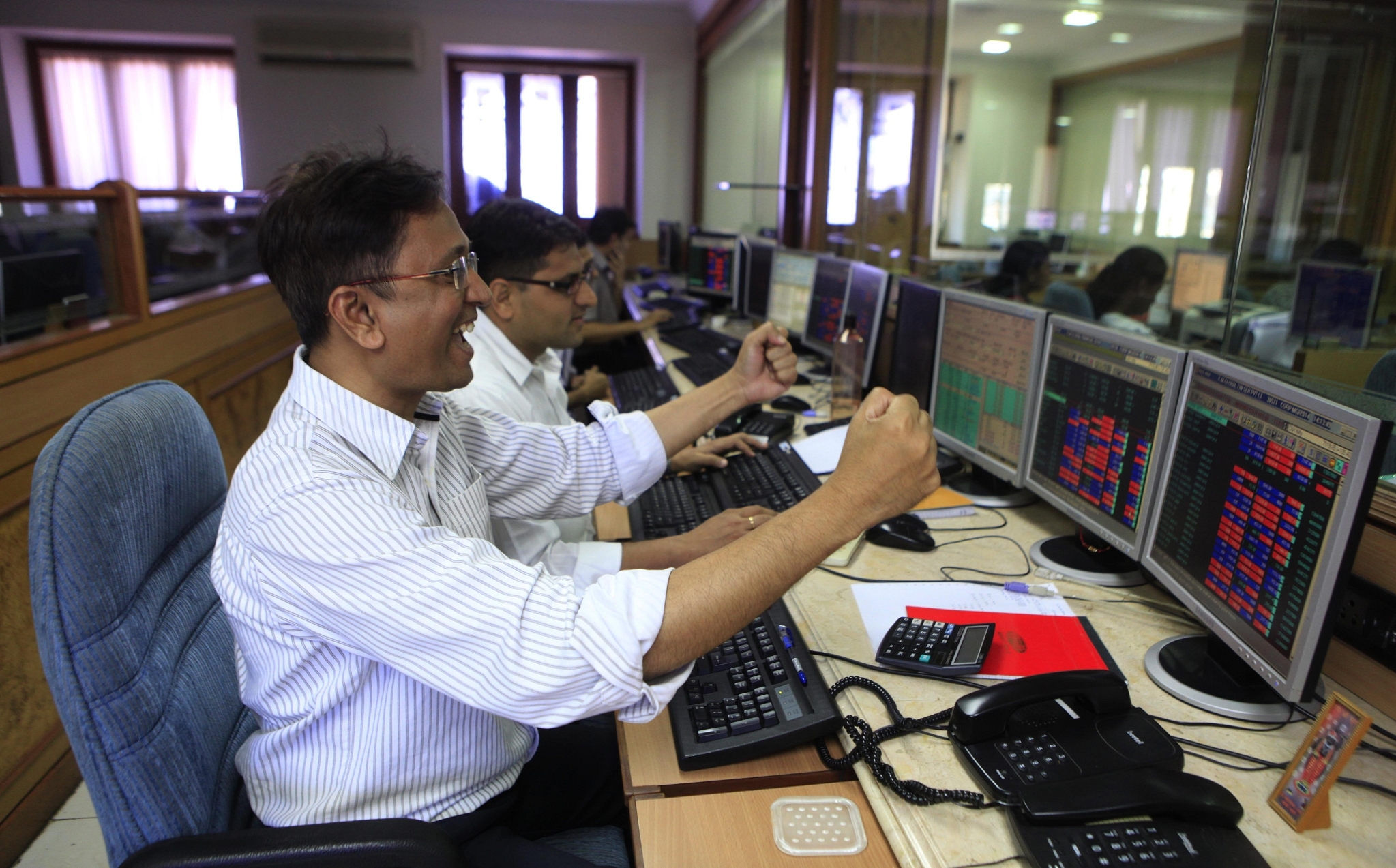Economy
Do Sensex Highs Indicate Irrational Exuberance? Probably Not. Here’s Why
- Nobody can predict how the markets will turn in the short to medium term, but there are good explanations for Dalal Street’s current bullish mood.
- This does not guarantee that the current index levels will hold, but there is a certain method to the madness of the bourses.

Stock traders rejoice over sensex surge. (Anshuman Poyrekar/Hindustan Times via GettyImages)
Normally, when one celebrates bad news, one should be labelled a masochist. Are India’s stock market indices, the Nifty and the Sensex, examples of market masochism?
Consider what is happening in the real economy right now: the economy is tanking, the fiscal deficit is out of control, sectors ranging from telecom to autos, real estate and non-banking finance are in deep trouble, the ruling party at the Centre just lost control of the richest state this week, and the external economic environment is far from conducive to growth.
Amidst all this gloom, the Nifty soars past 12,100 and the Sensex 41,000. Is this irrational exuberance, a bubble that is bound to burst once sanity returns?
Nobody, of course, can predict how the markets will turn in the short to medium term, but there are good explanations for Dalal Street’s current bullish mood when Khan Market and Bhendi Bazaar are downbeat. This does not guarantee that the current index levels will hold, but there is a certain method to the madness of the bourses.
First, the market has seen a steely intent in the Narendra Modi government to finally fix some of the economic problems. The corporate tax cuts, the injection of funds into banks, the cut in interest rates, the relaxation of the fiscal roadmap this year, and the cabinet’s bold move to privatise companies like Bharat Petroleum, Concor, Shipping Corporation of India and Air India are seen as a huge commitment to reforms and to reverse the slowdown. The markets see this as the first instalment of moves to revive animal spirits.
Second, the market usually discounts the future and not the past. It is not the current set of gloomy numbers it is focusing on, but future prospects. Currently, the Nifty and Sensex have high price-earnings (PE) multiples of over 28 – this is usually a signal of an approaching top. But if forward PE estimates are lower, as many brokerage houses are projecting, the valuations may not be over-the-top. Forward PEs are now in the 18-19 range from many brokerages – not devilishly high.
Third, the market moves not only on fundamentals, but also liquidity. The more the money chasing stocks, the higher their valuations. In the calendar year to 25 November, foreign institutional investors (FIIs) invested Rs 90,700 crore in equity, while domestic institutions invested Rs 57,664 crore. That’s a net inflow of Rs 1.48 lakh crore – or more than $20 billion at current exchange rates.
Even better, retail investors are not panicking. Monthly inflows into SIPs (systematic investment plans) continue to grow at over Rs 8,000 crore – which is more than $1 billion from small investors. This is what is giving the market new legs to walk on. It is not over-dependent on foreign players alone.
But more money could be coming in not only through the portfolio route, but direct foreign investment in Indian assets. If a foreign company buys Bharat Petroleum, we are talking of a $9-10 billion inflow on this account alone. If more assets get sold to foreign entities, the inflows will be higher. Privatisation means those buying Indian assets will also have to make open offers to minority shareholders, which again is good for market pricing of those shares.
Quite clearly, there is still some steam left in the market as long as the Modi government pushes the reforms and economic revival agenda forward. The markets will be volatile, as the coming months bring in more gloomy data on gross domestic product growth and sectoral reverses. Fund managers could also sell later next month to lock in gains during the Christmas-New Year holidays, but expectations from the next budget will continue to buoy hopes.
In short, one need not panic at current high market valuations unless the budget turns out to be a disaster. Sure, book some profits, but there is no case for exiting good investments altogether right now.
Support Swarajya's 50 Ground Reports Project & Sponsor A Story
Every general election Swarajya does a 50 ground reports project.
Aimed only at serious readers and those who appreciate the nuances of political undercurrents, the project provides a sense of India's electoral landscape. As you know, these reports are produced after considerable investment of travel, time and effort on the ground.
This time too we've kicked off the project in style and have covered over 30 constituencies already. If you're someone who appreciates such work and have enjoyed our coverage please consider sponsoring a ground report for just Rs 2999 to Rs 19,999 - it goes a long way in helping us produce more quality reportage.
You can also back this project by becoming a subscriber for as little as Rs 999 - so do click on this links and choose a plan that suits you and back us.
Click below to contribute.
Latest